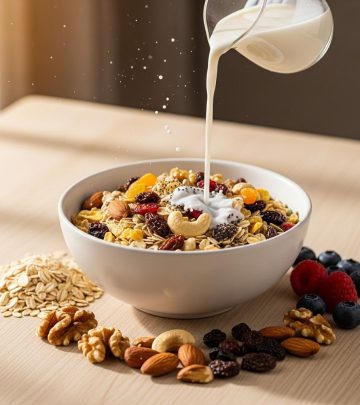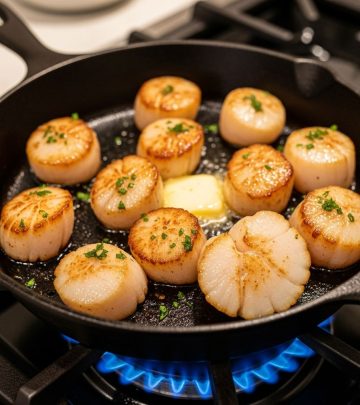Does Cooking Kill Salmonella? Food Safety Facts and Myths
A comprehensive guide to understanding salmonella, safe cooking temperatures, and essential kitchen practices for preventing foodborne illness.

Does Cooking Really Kill Salmonella?
Salmonella is a notorious foodborne pathogen responsible for countless outbreaks and product recalls involving meat, poultry, eggs, produce, and even shelf-stable goods. Every year, many consumers wonder if their everyday cooking habits can effectively destroy this microorganism and protect them from food poisoning. With kitchen safety continually in the spotlight, understanding the science behind salmonella, its survival mechanisms, and how different cooking methods impact its elimination is essential for both home cooks and professionals.
Understanding Salmonella: The Basics
Salmonella refers to a group of bacteria responsible for causing gastrointestinal illnesses, commonly known as salmonellosis. Infections typically occur after the ingestion of contaminated foods—ranging from raw poultry and eggs to fresh vegetables, fruits, nuts, and even spices. While most cases resolve without intervention, severe infections can result, especially in vulnerable populations such as infants, the elderly, and those with weakened immune systems.
- Symptoms: Diarrhea, fever, abdominal cramps, headache, and in rare cases, complications like bloodstream infections.
- Transmission: Salmonella spreads through contact with contaminated food, surfaces, or by poor hand washing after handling animals or raw foods.
- Persistence: These bacteria can survive for months in low-moisture environments, making dry foods like spices and nuts potential carriers.
The Science: Does Cooking Kill Salmonella?
The simple answer is: Yes, heat does kill salmonella, but only if the food reaches and maintains a sufficient temperature for an adequate amount of time. Raw or undercooked foods remain risky; thoroughly cooked foods, when handled properly afterward, are generally safe.
How Heat Destroys Bacteria
Salmonella, like most bacteria, is sensitive to heat. When exposed to high temperatures, its cellular proteins and membranes become denatured, essentially killing the microbe. However, incomplete or uneven heating may allow bacteria to survive, especially within thick cuts of meat or inside ground products where pathogens may be distributed throughout the mass.
Critical Temperatures by Food Type
Food safety experts and agencies recommend specific internal cooking temperatures to ensure pathogens like salmonella are effectively destroyed. These temperatures are measured at the core or thickest part of the food using a reliable food thermometer.
| Food | Recommended Internal Temperature | Notes |
|---|---|---|
| Poultry (whole or ground) | 165℉ (74℃) | Ensure all parts, including inner joints, are fully cooked |
| Ground meats (beef, pork, veal, lamb) | 160℉ (71℃) | Bacteria is distributed throughout after grinding |
| Whole cuts of meat (beef, pork, lamb, veal) | 145℉ (63℃) | Rest for 3 minutes after cooking |
| Egg dishes | 160℉ (71℃) | Cook until yolk and white are firm |
| Leftover or reheated foods | 165℉ (74℃) | Rapid reheating to steaming hot |
| Vegetables | 165℉ (74℃) | Especially if previously contaminated or cut |
Always verify with a food thermometer, as visual cues are unreliable for detecting doneness and safety.
Why Ground and Sliced Foods Require Special Attention
While many bacteria primarily exist on the outer surfaces of foods, the very processes of grinding and slicing can spread pathogens like salmonella throughout. This turns a once-contained risk into a pervasive one, highlighting the importance of fully cooking all ground meats and cut vegetables.
- Once meat is ground, any bacteria from the surface mingle throughout the product, making rare or medium-rare ground meat unsafe.
- Slicing vegetables (such as onions or carrots) moves bacteria from the outer peel to the inner tissue, making proper washing and cooking essential.
Cross-Contamination: Cooking Isn’t Always the Last Step
Even if your meal is perfectly cooked, contamination can reoccur after the fact. Cross-contamination often happens when cooked food comes into contact with contaminated surfaces, tools, or hands. The same cutting board, knife, or plate used for raw poultry or meat can seamlessly transfer salmonella to ready-to-eat foods—even after thorough cooking.
Steps to Prevent Re-Contamination
- Always use separate cutting boards and knives for raw and cooked foods.
- Wash hands thoroughly with soap and warm water before and after handling raw foods.
- Sanitize kitchen surfaces and utensils after contact with raw products. Dishwasher-safe tools are best for easy disinfection.
- Store raw meat on the lowest shelf in the refrigerator, sealed and away from ready-to-eat foods, to avoid drips and accidental exposure.
How Does Salmonella Get Into Food?
Salmonella can contaminate foods at any point from farm to table. Contamination may start during harvesting, slaughter, or processing, especially if hygiene protocols are lacking. Foods most at risk include:
- Poultry, eggs, and unpasteurized dairy products
- Fresh produce (especially those cut or peeled in advance)
- Processed foods like peanut butter, chocolate, or even dried spices and nuts, where the bacteria’s ability to survive dry environments presents unique challenges
Rapid global distribution means outbreaks can cover extensive geographic regions, impacting unexpected foods like hummus or raw onions.
Safe Food Handling and Storage
Surviving salmonella outbreaks and recalls involves more than just cooking. Safe storage and handling practices dramatically reduce the risks at each step:
- At purchase: Buy raw meats and eggs from reputable sources. Check use-by dates and avoid damaged or leaking packages.
- Transportation: Keep perishable foods cold while shopping, using insulated bags or coolers if necessary.
- Storage: Store raw meat/poultry in sealed containers or bags at the bottom shelf of your refrigerator to prevent juices from dripping onto other items. Freeze foods if not cooking within a couple of days.
- Thawing: Defrost meats in the refrigerator, never on the countertop. Use a dish or tray to catch any liquid.
- Prompt cooking: Cook raw foods by their use-by dates. When reheating leftovers, ensure they are steaming hot throughout.
What About Low-Moisture Foods?
Unlike most bacteria, salmonella can persist for months in dry foods. In products like dried milk, pasta, chocolate, or nuts, routine cooking may not always apply. For these items, prevention relies on sourcing from reputable manufacturers who follow rigorous testing and hygiene protocols, as home sterilization is rarely possible.
Common Myths About Salmonella and Cooking
- Myth: Washing meat kills bacteria. Fact: Only thorough cooking destroys salmonella. Washing may spread bacteria around the kitchen.
- Myth: Freezing kills bacteria. Fact: Freezing only halts bacterial growth, it does not kill salmonella—thorough cooking is required.
- Myth: A pink center is safe if the outside is browned. Fact: Color is not a reliable indicator of safety; only a thermometer tells if internal temperatures are sufficient.
Why Recalls Happen—And What to Do
Food recalls related to salmonella usually stem from detection of the bacteria at any point in production or distribution. Notably, the recommended response is to avoid consuming recalled products, even if you plan to cook them thoroughly. Instead, dispose of the items safely or return them to the point of purchase, as there’s no guarantee all contaminated parts will reach a safe temperature during home cooking.
Checklist: Keeping Salmonella Out of Your Kitchen
- Check for product recalls before use.
- Store raw foods separately from ready-to-eat items.
- Use a food thermometer every time you cook poultry, ground meats, or egg dishes.
- Wash hands and surfaces frequently with soap and hot water.
- Sanitize cutting boards, knives, and countertops after handling raw meat or eggs.
- Never use the same utensils or plates for cooked and raw foods.
- When in doubt, throw it out—never taste food to assess safety.
Frequently Asked Questions (FAQs)
Q: Does cooking vegetables make them safe from salmonella?
A: Yes, cooking vegetables to an internal temperature of 165℉ (74℃) kills salmonella. However, if contaminated tools or cutting boards are used afterward, recontamination can occur.
Q: Is it safe to eat rare or medium-rare ground beef?
A: No. Because any bacteria present on the surface of meat are mixed throughout when ground, rare ground beef may carry salmonella and other pathogens. Always cook ground beef to at least 160℉ (71℃).
Q: Can I just wash off salmonella from produce?
A: Washing reduces but does not eliminate bacteria like salmonella. Cooking is the most reliable way to ensure pathogens are destroyed. For foods eaten raw, thorough washing and peeling reduce risks but do not guarantee safety.
Q: Does freezing food kill salmonella?
A: No. Freezing halts growth but does not kill the bacteria. Only sufficient heat destroys salmonella, so proper cooking is still needed after thawing frozen foods.
Q: What should I do if I suspect I have eaten contaminated food?
A: Watch for symptoms like diarrhea, fever, and cramps within 12 to 72 hours. Most cases resolve on their own, but severe symptoms, dehydration, or complications require medical attention.
Conclusion: Smart Cooking, Safe Eating
Cooking is one of our best defenses against foodborne pathogens like salmonella—but only if done correctly and paired with smart handling and storage practices. By focusing on the right temperature, using a food thermometer, and staying vigilant about cleanliness, you can keep your kitchen and your family safe from the invisible dangers lurking in food.
Sources
- Food and Drug Administration: Salmonella (Salmonellosis)
- Food52: Wait, So Does Cooking Actually Kill Salmonella?
- FoodSafety.gov: Bacteria and Viruses
- National Center for Biotechnology Information: Salmonella, Food Safety and Food Handling Practices












